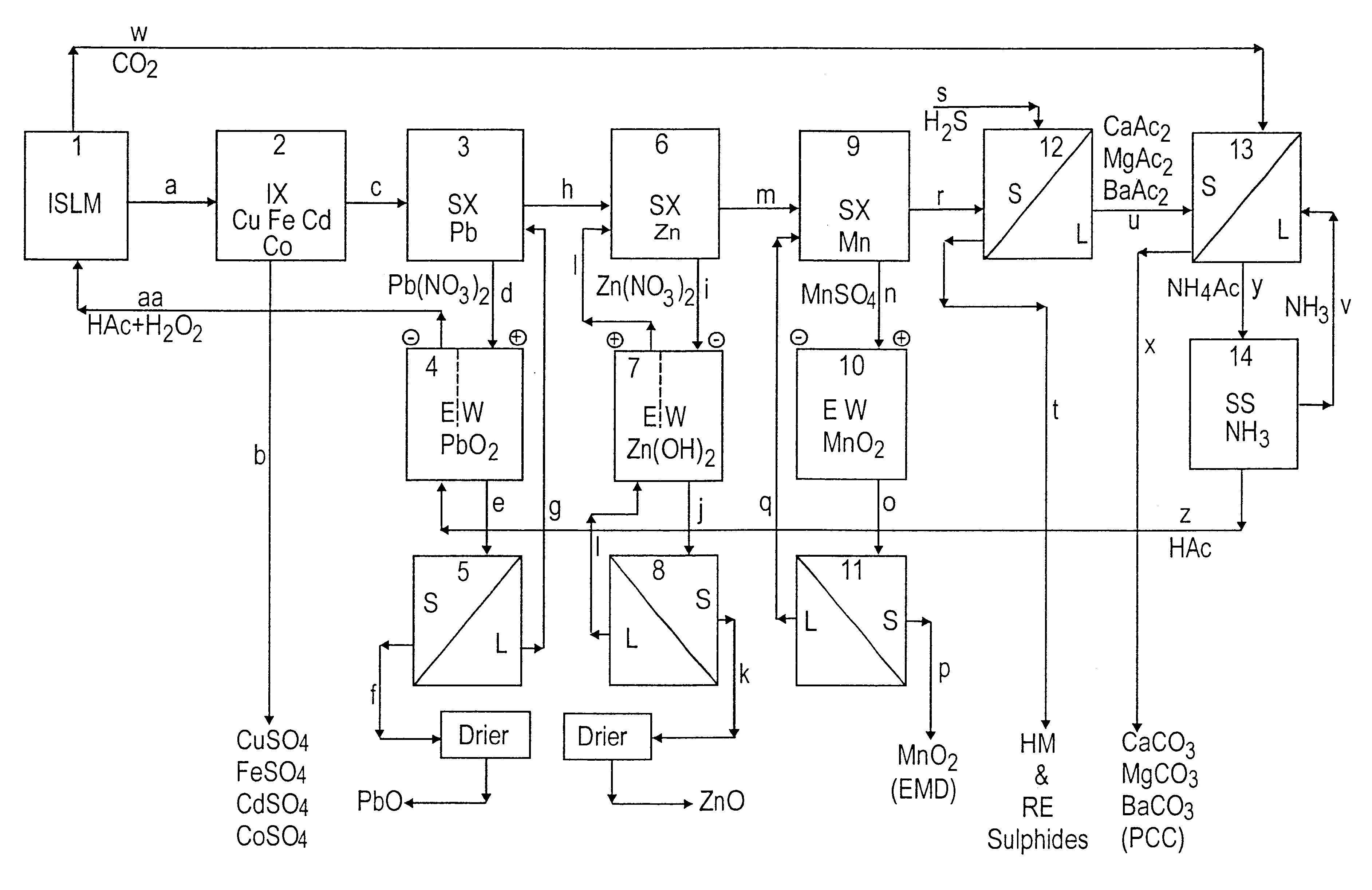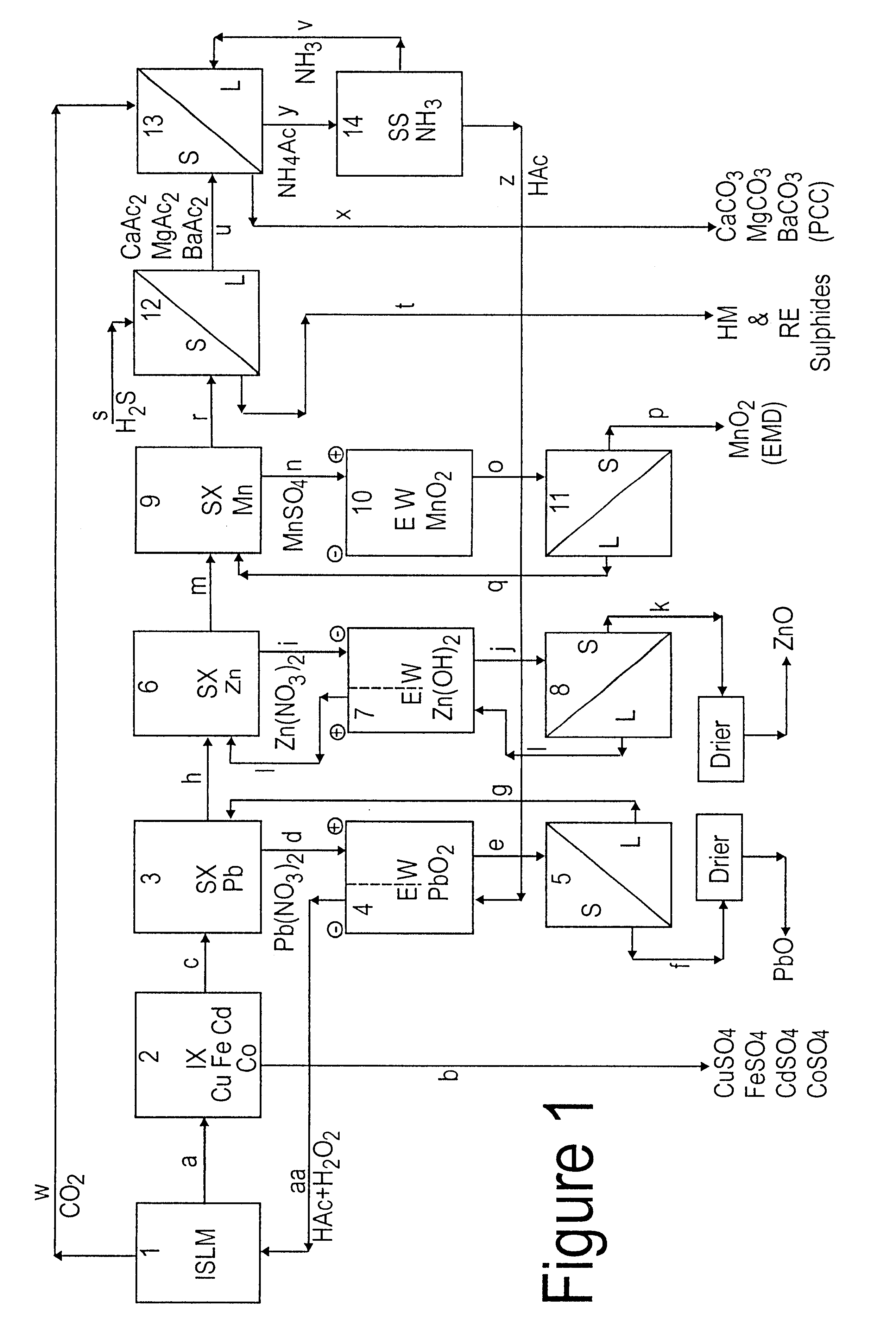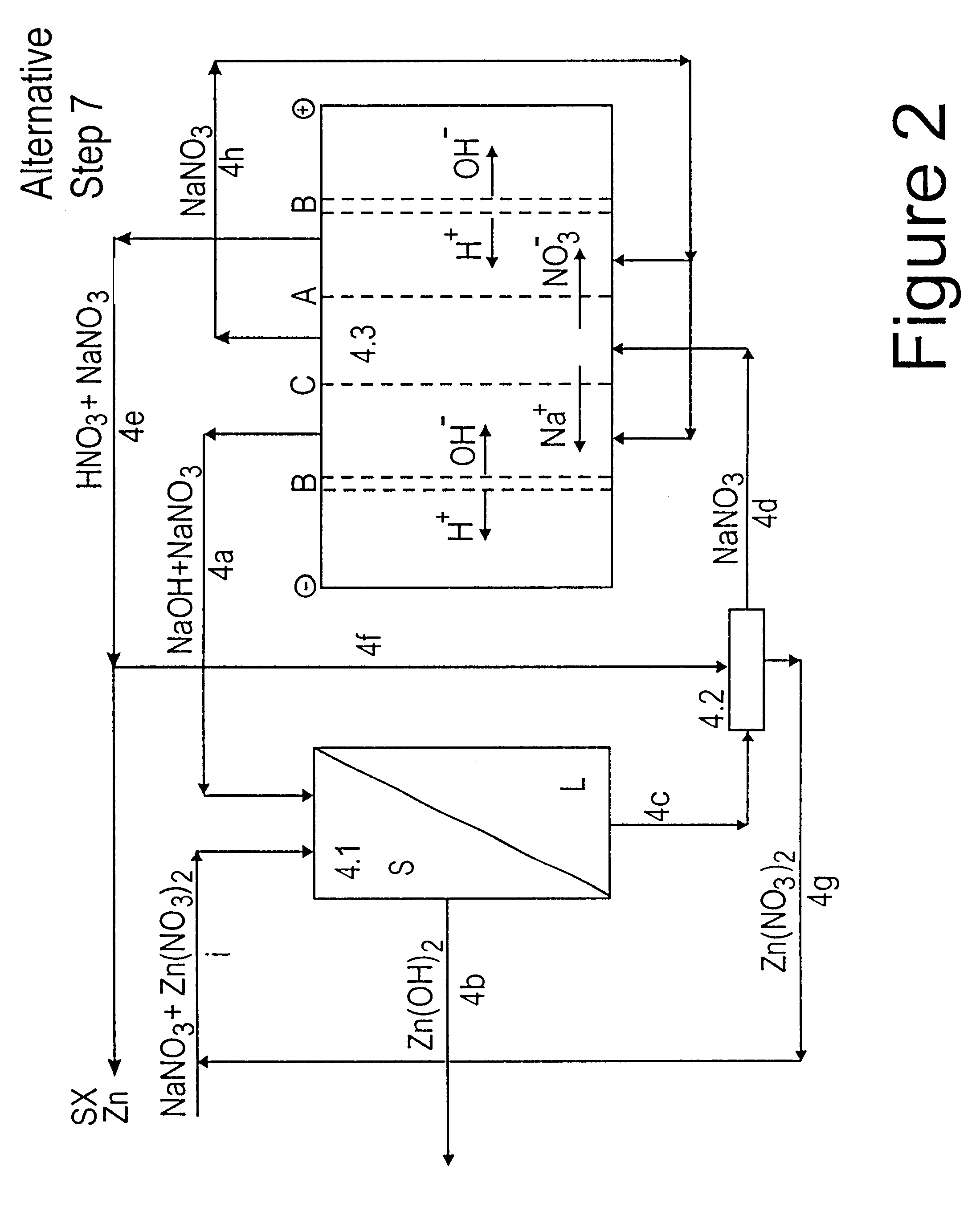Lead, zinc and manganese recovery from aqueous solutions
a technology of lead zinc and zinc, applied in the field of lead zinc and manganese recovery from aqueous solutions, can solve the problems of destroying batteries, causing ugly scars to the landscape, and consuming a lot of time, so as to reduce costs and time, eliminate environmental impact, and reduce costs
- Summary
- Abstract
- Description
- Claims
- Application Information
AI Technical Summary
Benefits of technology
Problems solved by technology
Method used
Image
Examples
example 1
Degradation of Cyanex 302.TM. by Fe or Cu
Each of the following solutions was prepared:
(A) Leachate with the composition in Table 1 made by treating a PbS ore according to the US '066 patent.
(B) Solution (A) from which Cu was extracted by means of IX
(C) Solution (A) from which Fe was extracted by means of IX
(D) Solution (A) from which Cu and Fe were extracted by means of IX
(E) Solution (A) from which Cu, Fe, Cd and Co were extracted by means of IX
(F) 0.5 M Cyanex 302 (20% v / v in UN 1223 kerosene)
The following tests were performed:
(i) 1,000 mls of (B) were thoroughly mixed with 1,000 mls of (F) in a blender for 10 minutes then allowed to settle until aqueous and organic phases were separated whereupon the organic phase was removed and stripped with 1,000 mls of 10%HNO.sub.3 and the strip liquor was analysed for each of the components in solution (A). The organic phase (F) was then th oroughly wash ed with 5 volumes of distilled water and the experiment repeated six times at intervals ...
example 2
Selectivity of Cyanex 302 for Pb
1,000 mls of solution (E) above were thoroughly mixed with 500 mls of solution (F) for 10 minutes in a blender and the mixture was allowed to settle until the aqueous and organic phases had completely separated. The organic phase was decanted and scrubbed with a 5% Pb(NO.sub.3).sub.2 solution and then stripped with a 10% HNO.sub.3 solution. Analysis of the strip liquor for all of the components in solution (E) indicated that only Pb was present confirming the selectivity of Cyanex 302 for Pb from the metals in Table 1 when neither Cu, Fe, Cd nor Co is present.
As mentioned above, a macrocyclic polyether such as crown ether 4, 5' di-t-butylcyclohexano-18-crown-6 (having 6 ether groups) may be used instead of Cyanex 302 .TM. to recover Pb by SX. The monothiophosphinic acids are preferred.
example 3
Selectivity of Cyanex 302 for Zn
1,000 mls of solution (E) above from which Pb had been extracted by SX were thoroughly mixed with 500 mls of solution (F) for 10 minutes in a blender and the mixture was allowed to settle until the aqueous and organic phases had completely separated. The organic phase was decanted and scrubbed with a 5% Zn(NO.sub.3).sub.2 solution and then stripped with a 10% HNO.sub.3 solution. Analysis of the strip liquor for all of the components comprising the Pb depleted solution (E) indicated that only Zn was present confirming the selectivity of Cyanex 302 for Zn from the metals of Table 1 when neither Fe, Cu, Cd, Co nor Pb is present.
As mentioned above the Di(2-ethylhexyl) phosphoric acid (C.sub.16 H.sub.35 O.sub.4) or the Di(2-ethylhexyl) phosphorothioic acid (C.sub.16 H.sub.35 O.sub.3 PS) e.g. having the trade name "Baysolvex" or the C.sub.26 H.sub.34 SN.sub.2 O.sub.2 type reagent manufactured by Cognis Inc under the trade name LIX 34, can also be employed t...
PUM
| Property | Measurement | Unit |
|---|---|---|
| Acidity | aaaaa | aaaaa |
| Ion exchange properties | aaaaa | aaaaa |
Abstract
Description
Claims
Application Information
 Login to View More
Login to View More - R&D
- Intellectual Property
- Life Sciences
- Materials
- Tech Scout
- Unparalleled Data Quality
- Higher Quality Content
- 60% Fewer Hallucinations
Browse by: Latest US Patents, China's latest patents, Technical Efficacy Thesaurus, Application Domain, Technology Topic, Popular Technical Reports.
© 2025 PatSnap. All rights reserved.Legal|Privacy policy|Modern Slavery Act Transparency Statement|Sitemap|About US| Contact US: help@patsnap.com



